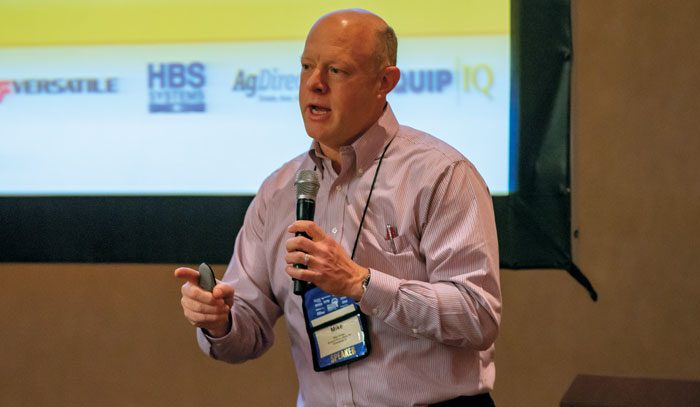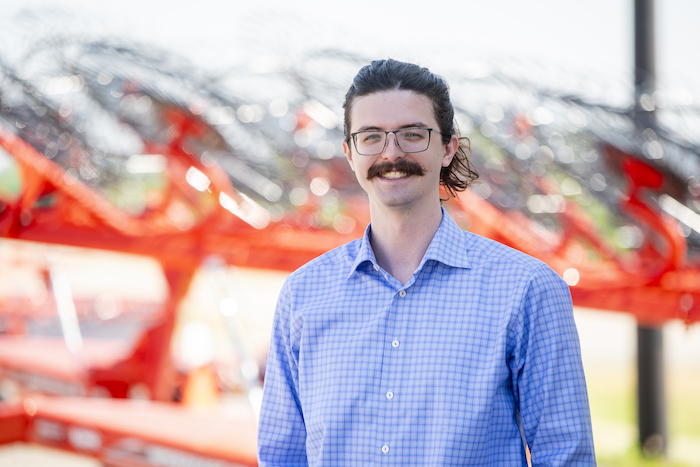Birkey’s Farm Store, a 17-store Case IH dealership with locations in Illinois and Indiana, announced Jan. 6, 2022, it had become 100% employee-owned as part of an Employee Stock Ownership Plan, otherwise known as an ESOP.
“Recent research has shown companies who are ESOPs are typically faster, more productive, growing more and more profitable with less turnover,” CEO Mike Hedge said in the press release. “This will help in recruiting, retaining and engaging employees as we move forward.”
We sat down with Hedge to learn more about the ownership change. He says the transition to an ESOP helps the company with employee retention and will give it an edge in future mergers & acquisitions.
When did the idea to transition to an ESOP first come up at Birkey’s?
Mike Hedge: Over the years, we’ve never had a majority owner at Birkey’s. When I joined, I believe we had 13 owners. Over time we’ve bought owners out, the business has grown, and we found ourselves in a position with about 5 owners. The succession issue is huge in the life of many farm equipment dealers. Some choose to pass it on to their children. Some may sell to a private equity firm. Some firms look to find an investor to deal with an exiting shareholder.
We looked at a lot of alternatives. Probably the biggest thing on my plate in the last 7-8 years was how to fund an exit strategy. What made the ESOP appealing was an ability to execute this strategy without upsetting the culture or changing the management team. It lets us as owners “bet” on our people and the way they will respond in the future to secure our eventual exit.
Dealer Takeaways
- Engage an experienced ESOP accounting firm with a conservative approach to the transaction.
- ESOPs can generate the excess cashflow to fund future mergers & acquisitions.
- Continuously educate employees about the ESOP.
- Start the ESOP process well before you need to make a capital transaction.
We chose to take ownership notes back over a period of time. These are paid out over many years. You have a long runway of being paid back as you exit your ownership interest. That allows the ESOP time to grow and create the revenue cashflow streams to pay you out.
The one benefit we found besides the culture and the engagement of employees is as a retirement plan. The ESOP owns 100% of the company at this point. The ESOP trust is a retirement plan, and they are not subject to income taxes.
When you consider the amount of money in our case that goes out both to cover the shareholder taxes and to make some kind of a distribution of profits, the company now has access to a significant amount of the cashflow that it never had.
By not having to pay federal income taxes, you create cashflow to both fund the buyout of the owners and give stock to the employees. You also create cashflow to continue growing the business.
What was the process of transitioning to an ESOP like?
Hedge: First thing you’ve got to do is understand what your business is worth. We started that process a little over a year ago when we engaged an external accounting firm to do a business valuation. We’ve always had our internal valuations, but it’s been a number of years since we actually had an independent firm look at our business valuations.
And when we did this, we were at the beginning of the upswing that we’ve seen in the last 2 years. Our owner group was pleasantly surprised with how good the evaluation was, so we made the decision to take it to the next step in the first quarter of last year and conduct what’s called an ESOP feasibility study.
In the study, they take the process one step further and say, “what does this look like to a potential ESOP trustee who would look at acquiring the stock? Are they confident in your ability to run the business and the management team that’s going to be there afterward? How do they feel about your forecast?”
“I believe it’s going to generate surplus cashflow we can use for acquisitions…”
They gave us a detailed potential scenario showing the tax efficiency of an ESOP transaction and how the cashflows might be handled, including both an initial cash down payment to the shareholders and the notes receivable and interest rates and other items that might be a part of the package.
Can you talk more about the connection between transitioning to an ESOP and preserving the employee culture and employee retention?
Hedge: When we go to recruit, having not only a full package of benefits but having the added benefit of giving employees stock in the company every year is a huge benefit. We think that gives us a leg up on many other companies that may be trying to recruit employees. Once you get employees receiving the shares and they have a balance, they begin to understand how that grows.
From a retention standpoint, it becomes a huge motivator for somebody to stay. We already have good retention of our people, and we think this should enhance it.
Repurchase liability can be a concern with ESOPs. Can you speak more about what that means?
Hedge: Every ESOP is going to have repurchase obligations. Some of them happen if employees leave and some of the small balances get cashed out, while some of the employees with larger balances have to wait until they get to retirement age. A lot depends on how the ESOP document is structured.
In our case, there won’t be a lot of early payouts when people leave until they get to retirement. It’s pretty focused on them reaching the age of 62 to get payouts. The one positive thing is the people who designed our ESOP were very conservative in the way they put it together. If they’re too aggressive at distributing shares early in the life of the ESOP, then the re-purchase obligations probably come much quicker.
In our case, the shares are allocated over 40 years, which sounds like a huge time horizon, but it will allow the ESOP to be more conservative. It also leaves shares available for new hires pretty much indefinitely.
You can get yourself in trouble by distributing the shares to the people who work for you early in the life of the ESOP and then in future years, you don’t have a meaningful amount of stock to give new employees.
We’ve got to educate our employees, especially in our business cycles we expect to see in our industry. There’s going to be ups and downs. We’re going to see the stock value move as we go through these cycles. Our people need to be prepared for this. It behooves us to be very open in our communication with them about what’s going on with the performance of the business.
It’s no different than how our investment advisor for our 401(k) communicates with our people about being in it for the long haul. Employees really don’t need this money until they are ready to retire.
What are some other financial benefits of having an ESOP?
Hedge: By not paying federal taxes, you not only have the cashflow to fund the owner notes and give stock to the employees, but I believe it’s going to generate surplus cashflow we can use for acquisitions.
Over the years, we’ve done a number of acquisitions, but as some of us have gotten older, there’s sometimes a bit of indecision. Do you invest more and grow the business, or do you keep some of that reserve cash to repurchase stock from a future retiring shareholder? The ESOP takes this off the table. I think it’s really going to open up the dealership to grow.
What advice do you have for dealers who are considering forming their own ESOP?
Hedge: The biggest piece of advice I can give is make sure you thoroughly vet the accounting firm and the legal people who are doing this for you. Make sure they have a lot of experience in ESOP transactions.
I would be looking for somebody who is going to be conservative in their approach. We feel like we hit a home run with both the accounting firm and the law firm we used.
They didn’t create unrealistic expectations. They probably undersold us on where we would be, and they over-delivered. Because both the law firm and the accounting firm are tied into ESOP associations, they had good relationships with the potential trustees and the law firms who work the other side of the transaction. This made the negotiating go much smoother than I anticipated, as you are actually negotiating against a trustee, their legal counsel and their valuation advisors.
It helped that all these people had done deals together, and they’ve been on both sides of the transactions.
Since we’ve done this deal, I have probably talked to half a dozen dealers, and the capital transition in our businesses is one of the hardest things we ever face. It doesn’t go away. There comes a time to address it.
My CFO and I went to an ESOP conference probably 4-5 years ago when it was just one of a half dozen different options we were looking at. But that conference put us in the mix with people who were in that space, and it made introductions to accounting firms and advisors to keep in touch with.
When we were at the point where our group was ready to make a move, it felt like we already had the basic introductions we needed. We knew some of the players, and it made it a lot smoother for us to jump into this. If we hadn’t laid this groundwork, we would have been starting completely from scratch.
My advice is to do this well in advance. Don’t wait until you have to do something. Invest the time to understand the basics now. Though our board is staying intact, we will be required to bring in a couple independent board members. But we can continue to run the business until such time that we’re ready to make an exit. It’s a win-win for everyone.







